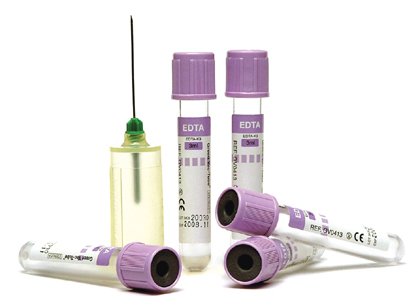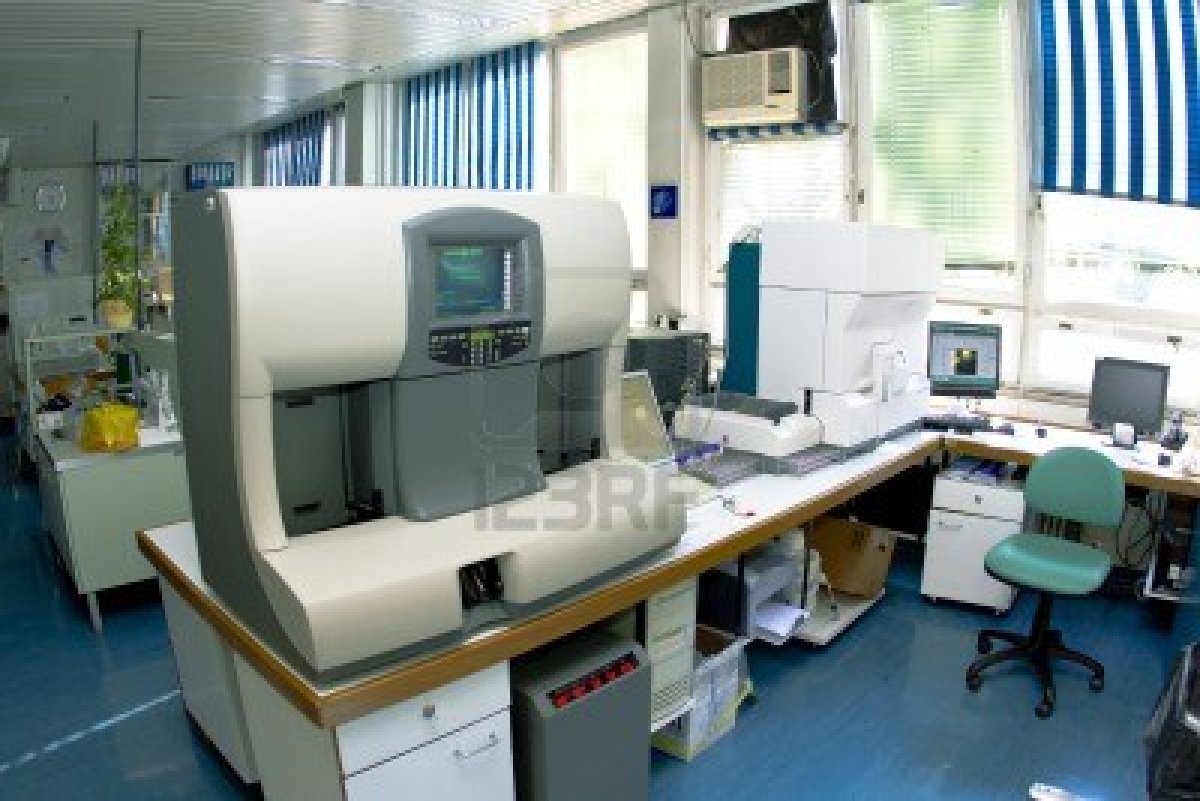IN THE MEDICAL LABORATORY
CODE OF PROFESSIONAL CONDUCT
FOR
MEDICAL LABORATORY PERSONNEL
1. Place the well-being and service of the sick above your own interests.
2. Be loyal to your medical laboratory profession by maintaining high standards of work and striving to improve your professional skills and knowledge.
3. Work scientifically and with complete honesty.
4. Do not misuse your professional skill or knowledge for personal gain.
5. Never take anything from your place of work that does not belong to you.
6. Do not disclose to a patient or any unauthorized person the results of your investigations.
7. Treat with strict confidentiality any personnel information what you may learn about a patient.
8. Respect and work in harmony with the other members of the Suralco Medical Department.
9. Be at all times courteous, patient, and considerate to the sick and their relatives.
10. Promote health care and the prevention and control of disease.
11. Follow safety procedures and know how to apply FIRST AID.
12. Do not drink alcohol during laboratory working hours or when on emergency stand-by.
13. Use equipment and laboratory ware correctly and with care.
14. Do not waste reagents or other laboratory supplies.
15. Fulfill reliably and completely the terms and conditions of your employment.
Importance of the laboratory
The blood carries all kinds of nutrients such as proteins and glucose and contains red and white blood cells and platelets. The waste products produced by the body are transported through the blood and excreted in the urine. The various ingredients are present in the correct proportions and amounts. When sick, there is sometimes too much of something or too little.
Why a laboratory study?
Your treating doctor wants to have laboratory tests for a certain component in your blood, urine or stool.
The laboratory examination serves for:
1. determining or excluding diseases
2. monitoring the course of a disease
3. determining the success of a treatment
4. prevention of disease
5. determination of the concentration of medicines in blood
Hundreds of laboratory tests are possible. Most tests are performed in blood, but tests of urine, faces or other body materials are also possible.
Your doctor will decide, possibly after consultation with the laboratory specialist, which examination you need. In the laboratories, only what your doctor asks for is examined.
Collection laboratories
Your doctor requests a laboratory test on a specially designed application form. On the application form, the desired survey is ticked and there is a printout of your punching place with your personal data.
Clinical Chemistry
Clinical Chemistry is the field of medical laboratory testing of blood and other bodily fluids. This research can be used to demonstrate or rule out diseases and to monitor treatment accurately. Analyzes can also be performed to prevent diseases or to provide a prognosis. Recent research shows that the effects of medicines can even be predicted in advance.
The clinical chemist is responsible for the blood or other body fluids from the collection to the result of the examination. Under his or her auspices, the correct material is correctly collected, transported, analyzed and reporting takes place. The clinical chemist manages the laboratory organization, is responsible for quality control, advises the applying physicians and conducts scientific research.
Many routine laboratory research is nowadays fully automated, but there are also studies that require highly specialized knowledge. That is why several clinical chemists who specialize in a particular field work in the larger laboratories, such as the Vumc.


Blood tests
The employee of the collection laboratory will ask you to go to one of the collection areas for blood collection. Your date of birth will be requested in the collection room to check your personal data. The labels are attached to the different tubes. Afterwards, blood is taken, usually from your arm.
Urinalysis
The employee will give you a plastic jar with a label with your name on it. You can fill this container with urine in the toilet area of the collection laboratory. You can also fill the jar with urine at home according to the instructions given and bring it to the laboratory as soon as possible.
In some cases you will receive large plastic pots (jars) in which you have to collect all the urine produced at home for 24 hours. You will receive written information about this from the employee.
 Examination of stool
Examination of stool
The employee will give you a plastic jar with a label with your name, with the request to fill it at home with a small amount of stool.
For some examinations you will be given a large plastic jar in which you must collect all the stool produced at home for 24 hours. You will receive written information about this from the employee . Sometimes it is necessary to deliver the stool to the laboratory within half an hour . In that case you have received information about this. If you fill the jars you brought with you at home, make sure you have a clearly legible name and date of birth on the jars or jars.
The research in the laboratory
In the laboratory, your blood, urine or faeces will be examined with mostly automated and computer-controlled equipment for those components about which your doctor wants information.
The result of the examination
The result of the laboratory examination is only meaningful in combination with any other examination. All this information is known to your doctor. He is the one who can draw conclusions from it for diagnosis or treatment.
That is why we do not pass on the results and interpretations to you, but to your treating doctor and, at his special request, also to other doctors involved in your treatment. You have agreed with your doctor when you will hear the results from him. Please note that some surveys can take a week or more.
Use body material
Sometimes material - such as blood or urine - is left after the requested examination has been carried out. This residual material will be destroyed after all the results of the requested laboratory tests are known. However, this residual material is occasionally used in the laboratory as test material, for example to co-develop a new research method or to improve an existing research method. Naturally, this is done anonymously, which means that it cannot be traced that the material originated from you. If you nevertheless object to the use of your bodily material as test material, you can notify the employee of the sampling laboratory.
Safety in the laboratory
In a real chemical laboratory, the researcher works with different types of atoms and molecules, which a chemist such as Prof. A. Toom usually refers to chemicals. He studies the properties of these substances. Some of these substances can be harmful to health. There are also other dangers: some substances are flammable, other substances are non-flammable, but can cause a fire.
Any hazards are indicated on the bottle or packaging of the substance with pictograms and / or abbreviations. Below are some common icons:
 |
 |
 |
 |
| harmful | toxic | oxidizing | explosive |
 |
 |
 |
|
| harmful to environment | corrosive | flammable |
|
Because we are in the laboratory of Prof. A. Toom, working with real chemicals, it is important that we are well aware of a number of rules. These rules relate not only to the use of chemicals, but also to the use of aids such as glassware and gas burners.
| ||||
 Why do you think there are safety rules in a laboratory? Why do you think there are safety rules in a laboratory? | ||||
 What kinds of accidents can you think of in a laboratory? Name three. Using common sense, could you already come up with solutions to prevent these accidents? What kinds of accidents can you think of in a laboratory? Name three. Using common sense, could you already come up with solutions to prevent these accidents? | ||||
|
Safety rules in our laboratory The purpose of these rules is "Better to be safe than sorry!" - Always wear your lab coat and safety glasses in the laboratory. Even with experiments, which you think cannot pose any danger. - With all substances that you will be working with, you must assume that they are always toxic. - Work neatly, use a protective sheet on the table for all experiments. Avoid spilling chemicals on books, clothes or furniture. Always wash your hands afterwards. - Eating, drinking and using chewing gum is strictly prohibited! - Do not conduct tests without permission. This also applies to playing with matches and / or gas burner. - Never place burners, glassware and the like too close to the edge of the table. Broken glassware is immediately cleaned up (in a bottle bank!). - Do not leave the gas burner on unnecessarily! Be careful with long hair, rather tie it up. - It is forbidden to play with spray bottles with water. Playing around in the laboratory is not tolerated. - Clean up everything on time. Clean and dry used glassware. Return the items to where they came from. Follow the guidelines for chemical waste. Leave the table clean. | ||||
|
If something does happen ... If you obey the rules, the risk of accidents is extremely small. But what do you do if something does happen? - Clothes or hair on fire: use emergency shower or blanket. - Something in the eye: use eye wash. - Chemicals on your hands: wash thoroughly immediately. - Aggressive substances on your clothing: take off clothing and rinse skin with plenty of water. - Clean up spills and broken glassware immediately. - The building is equipped with fire detectors, which switch on the alarm. When the alarm rings for more than one minute, you must leave the building as soon as possible. |
Medical Waste Handling
